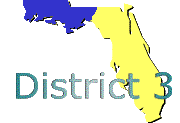| 1.0 | TRAVEL AND TRAFFIC MANAGEMENT |
| 1.5.2 | TSI shall include an Information Access function that allows travelers to access the available information. |
| 1.5.2.5 | Information Access shall provide the capability for travelers to access the TSI information via any of, but not limited to, the following methods: |
| 1.5.2.5(a) | Highway advisory radio. |
| 1.6 | TRAFFIC CONTROL |
| 1.6.0 | ITS shall provide a Traffic Control capability. Traffic Control provides the capability to efficiently manage the movement of traffic on streets and highways. Four functions are provided which are (1) Traffic Flow Optimization, (2) Traffic Surveillance, (3) Control Function, and (4) Provide Information. This will also include control of network signal systems with eventual integration of freeway control. |
| 1.6.1 | Traffic Control shall include a Flow Optimize function to provide the capability to optimize traffic flow. |
| 1.6.1.1 | The Flow Optimize function shall employ control strategies that seek to maximize traffic-movement efficiency. |
| 1.6.1.1.1 | Traffic-movement control shall manage movement of traffic on streets. |
| 1.6.1.1.2 | Traffic-movement control shall manage movement of traffic on highways. |
| 1.6.1.1.3 | Traffic-movement control shall include the goal of minimizing delay times. |
| 1.6.1.1.4 | Traffic-movement control shall include the goal of minimizing energy use. |
| 1.6.1.1.5 | Traffic-movement control shall include the goal of minimizing air quality impacts due to traffic. |
| 1.6.1.2 | The Flow Optimize function shall include a Wide Area optimization capability, to include several jurisdictions. |
| 1.6.1.2.1 | Wide area optimization shall integrate the control of network signal systems with the control of freeways. |
| 1.6.1.2.2 | Wide area optimization shall include features that provide preferential treatment for transit vehicles. |
| 1.6.1.2.3 | Wide area optimization shall include features that provide preferential treatment for HOV. |
| 1.6.1.3 | Flow optimize shall be implemented in a manner that seeks to optimize traffic movement over a large geographic area. |
| 1.6.1.4 | Flow optimize shall include a Control function that is responsive to both the current demand as well as the expected demand. |
| 1.6.1.4.1 | Control shall include the capability to facilitate the dissipation of traffic congestion. |
| 1.6.1.5 | Flow Optimize shall provide the capability to predict travel patterns. |
| 1.6.1.6 | The Control Function shall include the use of data acquired from traffic surveillance as feedback to the control strategies. |
| 1.6.1.7 | Implementation of the Control Function shall include strategies that account for at least the following: |
| 1.6.1.7(a) | Human factors. |
| 1.6.1.7(b) | Driver/traveler behavior and expectancies. |
| 1.6.2 | Traffic Control shall include a Traffic Surveillance function. |
| 1.6.3 | Traffic Control shall include a Control Function. |
| 1.6.3.1 | The Device Control Function shall include a "real-time" traffic-adaptive control capability. |
| 1.6.3.2 | The real-time traffic-adaptive control portion of the Control Function shall be an area wide control to include several jurisdictions. |
| 1.6.3.2.1 | The area wide control shall be implemented in an integrated and consistent manner that avoids the issuance of conflicting controls. |
| 1.6.3.2.2(a) | Transit. |
| 1.6.3.3 | The Device Control Function shall provide the capability to exercise control over those devices utilized for traffic control. |
| 1.6.3.3.1 | Device Control shall include the capability to control traffic signalization, including rapid modification of signalization parameters to respond to traffic requirements. |
| 1.6.3.3.2 | Device Control shall include the capability to control dynamically traffic signing. |
| 1.6.3.3.3 | Device Control shall include the capability to control freeway ramp metering. |
| 1.6.3.3.4 | Device Control shall include the capability to exercise dynamic control over the infrastructure (such as reversible-lanes, turning restrictions, etc.). |
| 1.6.3.4 | Device Control shall communicate control data to the following devices. |
| 1.6.3.4(e) | Human operator support. |
| 1.6.3.4.1 | Traffic Surveillance shall include a Data Process function to process the traffic data which are acquired. |
| 5.0 | EMERGENCY MANAGEMENT |
| 5.2 | EMERGENCY VEHICLE MANAGEMENT |
| 5.2.3 | Emergency Vehicle Management Service shall be provided by a Signal Priority System. |
| 5.2.3.1 | Signal Priority System shall maintain real-time information on signal timing, emergency vehicle locations and emergency vehicle routing. |
| 5.2.3.2 | Signal Priority System shall determine signal prioritize timing sequences for relevant signals. |
| | |




